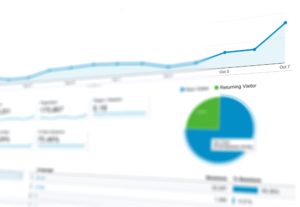How Do I Automate Tasks in My Organization?

Automation can be a powerful tool to streamline business processes, incorporate efficiencies, reduce human error, and reroute staff to focus on knowledge-based activities that cannot be automated. The benefits are clear.
Many tasks are obvious contenders for automation – standardized workflows, service tickets, and routine notifications are just a few examples. Any task that is done the same way every time or follows a consistent workflow can be automated. Our consultants have helped organizations like yours improve processes through automation.
There are dozens of low-code or no-code applications available. Still, before getting technical, you must first develop an approach to automation. At Momentum, our experienced business process automation coaches in Camp Hill, PA, regularly assist clients with their automation goals. Learn about how it works and what you need to know to be successful.
How to Automate: Get the Big Picture, But Be Specific
Like any quality improvement initiative, automation should be planned, tested, and refined in a continuous cycle. Understanding the overarching goals and strategy behind automation is critical, but you also need to know the details.
Our consultants recently coached a client who was automating notifications about status updates throughout their organization. Let’s take a look at what the planning and deployment of this automation project would look like.
Phase 1: Develop Goals and KPIs
Our client’s goal in the notifications project was to automate notifications about status updates. They wanted to save time and standardize notifications, so the language was the same across the organization. Once they decided to automate these status notifications and set the goal, we worked with them to create specific key performance indicators (KPIs) that tracked whether they were reaching their goal.
Changing processes requires setting goals and assessing them against KPIs. Your goal is the value-aligned objective. The KPIs are specific, trackable metrics to help you assess whether you are reaching your goal. We can work with you to develop KPIs that ensure your automations are aligned with your strategic goals.
Phase 2: Map Out the Process
During this phase, you’ll map out exactly what tasks will be completed and what triggers those tasks. There are lots of powerful automation tools available. Many of our clients use Microsoft Power Automate (formerly called Flow) because it integrates with Microsoft’s existing tools like Teams, Office 365, and Azure. These tools have become more user-friendly over time and allow you to map out what the automation looks like.
In our status update notification example, we worked with the client to create an As-Is Assessment to outline the existing process and a Future State Analysis to determine what the automation software will do. An employee begins work on a task in the system, which automatically creates a predetermined status update. As they move through the process, the automation application recognizes which notification to send based on where they are in the process. You have full control of what automation looks like for your specific needs. In many cases, this phase identifies opportunities for process improvement.
Phase 3: Develop and Test the Automation
A simple Google search will reveal the dozens of different tools available to automate various parts of your business, from sales to IT support. Many commercial off-the-shelf (COTS) products incorporate automation as a basic feature and allow organizations to configure this automation to suit their needs. The development will vary depending on the tool and level of coding required for the project, but the automation will always require testing.
Before deploying a process to the entire workforce, test the automation in a low-stakes testing environment first. In our example, our consultants will work with the client to develop a Testing Management Plan. This plan lays out all the details for testing, including what will be tested and who will execute testing. We’ll then prepare testing materials and coordinate testing activities to ensure that the developed automation works and meets the client’s needs. Depending on the software available, testing itself can sometimes be automated.
Phase 4: Assess KPIs and Refine the Process
Automation will change as processes evolve, especially in organizations with a culture of improvement. Regularly assessing KPIs and refining the process helps ensure a return on your investment in automation and helps keep your organization aligned with its strategic goals.
Complex Business Process Automation in Camp Hill, PA
Automation is key to strengthening resilience, especially in uncertain times. Just like any other organizational change, clearly-defined goals, a roadmap for how to get there, and robust testing and development can set you up for automation success. Contact us at Momentum today to start achieving your goals faster with an automation expert.
 Tap to email
Tap to email
